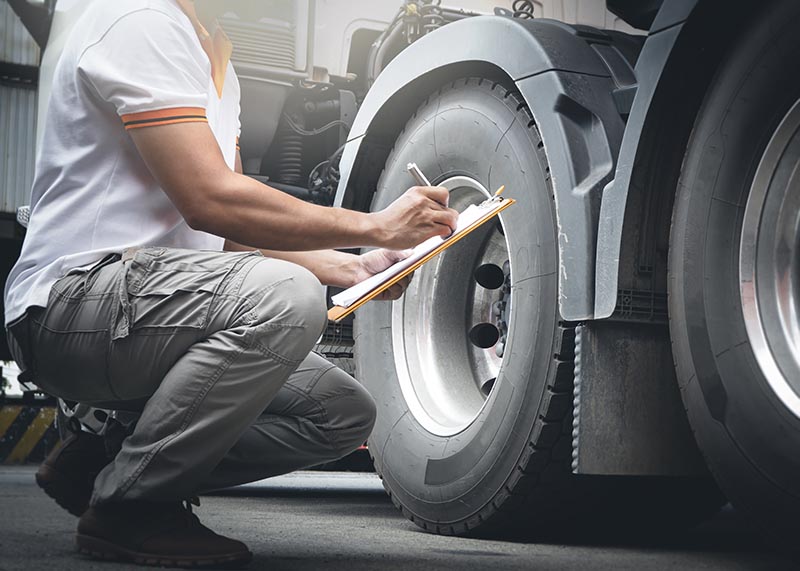
To ensure road safety and to be sure that trucking companies are complying with all of the rules, the Department of Transportation conducts random roadside inspections throughout the year. Many companies and drivers dread the day that they are tapped for inspection, especially since they happen at random. You may not be familiar with the DOT inspection levels and what they entail, but each level can be anticipated and prepped for.
Instead of feeling surprised and unprepared, follow this guide so that your next inspection goes smoothly.
What Is a DOT Inspection?
The DOT inspection is an annual inspection of commercial motor vehicles to ensure that all parts and mechanics are in good, safe working order and that drivers meet all licensing requirements and regulations. They are usually conducted roadside and are not planned.
Who Is Responsible for DOT Inspections?
There are three main organizations that work together to make the DOT inspections happen. They are:
- The Federal Motor Carrier Safety Administration: This DOT department is responsible for overseeing the inspection process, and for providing the funding to make it happen.
- The Commercial Vehicle Safety Alliance: This nonprofit group established the parameters and criteria for the North America Standard Inspection program.
- State Troopers: These designated officers for each state are tasked with (among other duties) carrying out the DOT inspections.
What are FMCSA Inspection Levels?
The Federal Motor Carrier Safety Administration administers six different levels of inspections that make up the North American Standard Inspection Program. Each of the DOT inspection levels have their own list of checkpoints and requirements. While Level I inspections are the most common, any of the levels can be administered at any time. Drivers will not know what level of inspection will occur when they are stopped, so it pays to be familiar with and prepare for all six.
Level 1: North American Standard Inspection
Level 1 inspections are the most common, and the most thorough, inspection. The officer will examine the entire vehicle including the undercarriage. He will also interview the driver and check that all required documentation is in order. The DOT Level 1 inspection checklist has three major components: driver, paperwork and vehicle.
Driver
Each driver will be evaluated and screened for:
- Alcohol consumption
- Drug use
- Seat belt use
- Illegal or hazardous material
Paperwork
Each driver will be expected to produce the required paperwork for the inspection, including:
- CDL license
- Medical examiner’s certificate
- Skilled Performance Evaluation certificate, if applicable
- Record of duty status
- Hours of service log
- Previous driver and vehicle inspection reports
Vehicle
Each vehicle will be thoroughly inspected for safety and to ensure that every aspect of the vehicle is in proper working order. Items that you can expect to be examined include:
- Frame
- Braking systems
- Fuel and exhaust systems
- Electrical cables and systems
- Steering mechanisms
- Wheels, rims, hubcaps and tires
- Coupling devices
- Windshield wipers
- All lights, including headlights, stop lights, brake lights and tail lights
- Seatbelts
- Emergency exits
- Safe loading
- Securement of cargo
Level 2: The Walk-Around Inspection
The only difference between DOT inspection levels 1 and 2 is that the officer only examines what can be seen while walking around the vehicle. While the inspector examines the vehicle from underneath during a Level 1 inspection, the inspector does not look under the vehicle during a Level 2 inspection.
This means that the Level 2 inspection is less exhaustive; however, drivers should still be prepared with all appropriate paperwork and expect examination of the same items on the DOT Level 1 inspection checklist for driver and paperwork. Additionally, the vehicle needs to be in good working order to pass the walk-around inspection.
Level 3: Driver-Only Inspection
A Level 3 inspection is limited to items that directly impact the driver. In addition to the driver’s requirements from the DOT Level 1 inspection checklist, you can expect the officer to check:
- HAZMAT requirements
- HM/DG requirements
- Seatbelts
Level 4: Special Inspections
A Level 4 inspection is a one-time examination of a specific feature. Often the DOT is following up on trends from previous years or a common violation in order to track improvement numbers.
Level 5: Vehicle-Only Inspections
A Level 5 inspection follows the DOT Level 1 inspection checklist, except that the driver is not present. This type of inspection typically follows an incident that causes the driver to be unable to participate in the inspection, such as an accident that requires hospitalization.
Level 6: Enhanced NAS Inspection for Radioactive Shipments
A Level 6 inspection follows the DOT Level 1 inspection checklist, with added items for trucks hauling radioactive freight. In this case, the cargo, vehicle and driver must all be defect-free in order to leave the inspection for delivery.
How Can I Prepare for DOT Inspections?
By understanding what is expected at different DOT inspection levels, you can prepare your drivers for their next stop. Contact your trusted insurance professional with any further questions you may have.
